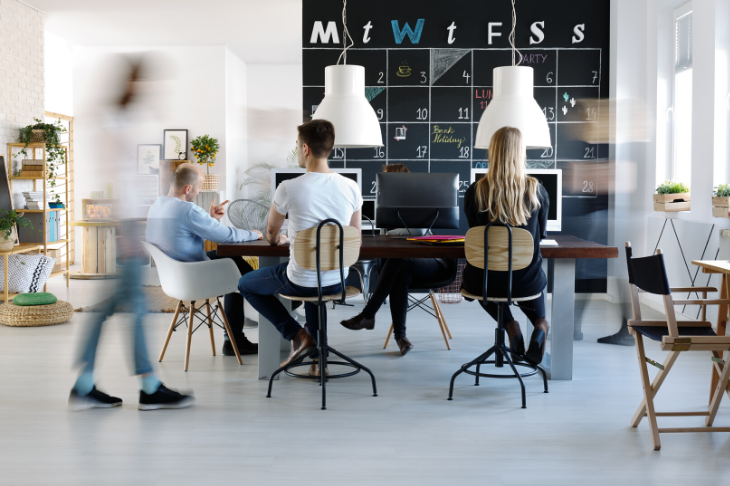Minimalism for Maximum Functionality
Traditional office design has always focused on the importance of functionality above all else, however today more and more businesses are moving in to smaller working spaces, so the question becomes, is traditional design the right way to go?
Functionality is of course always important, but for a smaller space it’s also crucial to maintain a sense of comfort, and peace for those working in it. Every space will have its own energy, whether that be uplifting, peaceful or creative, at the end of the day, what we all want from our work space is for it to be productive and efficient.
The move towards a smaller and more agile office space has seen the latest in home design concepts from around the world being adapted for the modern office.

Marie Kondo Minimalism
Marie Kondo is a household name when it comes to organised space. There are few who haven’t heard of her passion for tidying, and many have benefited from her philosophy.
The KonMari method is simple, keep only items that are useful, or that bring you joy, and discard anything else. Marie’s approach is ideal for those of us working with limited space. Following this method and getting rid of desk accessories you don’t use, obsolete technology and outdated files ensures you’ll be left only with items that are useful to your work, creating space for movement, productivity and happiness.

Minimalism in Design
Minimalism follows similar principles, teaching that stuff doesn’t make us happy – or healthy, or productive. With a larger focus on how many possessions one has, minimalism is about having, and surviving with less.
The important thing to take from minimalism or the KonMari method is that being surrounded by simplicity and order is beneficial to our mental wellbeing. Regardless of how we arrange our furniture, file our work or tidy our desks it’s crucial to be conscious of what we have and where it goes, everything must have a place.

Hygge Minimalism in Design
The Danish concept of hygge (pronounce “hoo-ga”) is more of a feeling than a design style. According to Meik Wiking, author of The Little Book of Hygge: “Hygge is about an atmosphere and an experience, rather than about things”.
As a minimalist style centered on cosiness and a lack of clutter, Hygee has real applications for the small working space, with the importance placed on the feeling of the space rather than the things in it, and the idea that the design of any small space is critical to a sense of comfort and wellbeing, and in turn, productivity.
The key to the success of any small working space is in the efficient use of the physical space, the reduction of clutter and the agility of the furniture, ensuring that no corner is wasted. Look for multifunctional, and moveable furniture pieces that allow for use in a variety of ways, making the most out of your space, and allowing for change.

